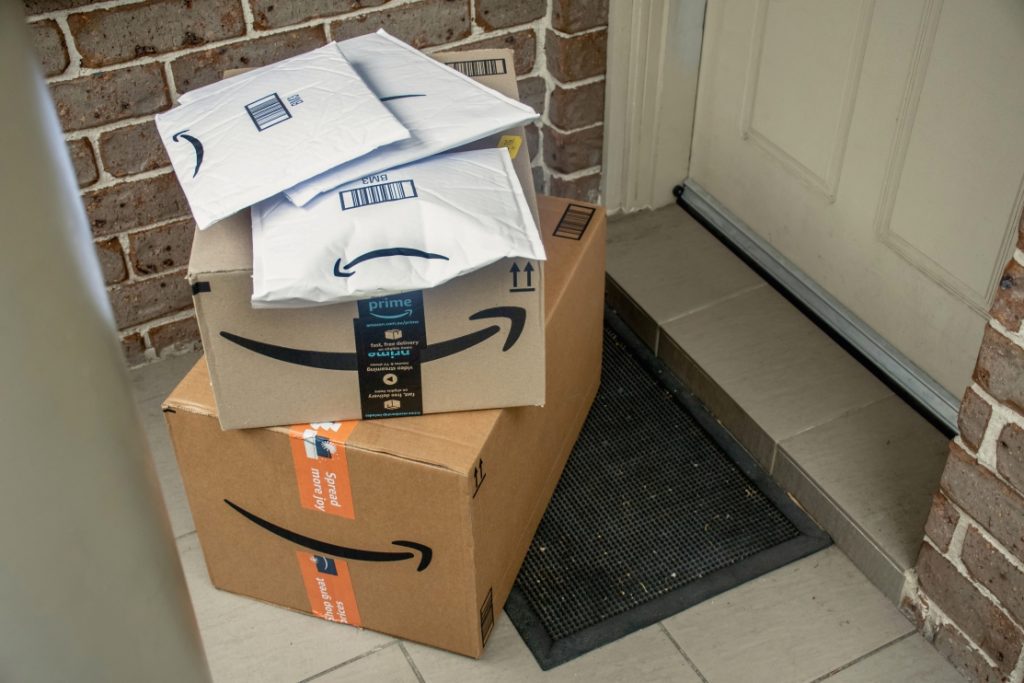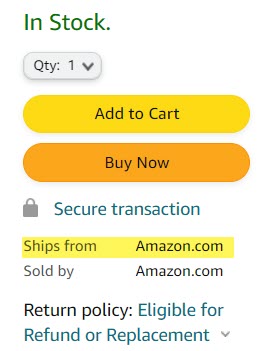Are you sending a product back to Amazon, and are wondering if they’ll check it?
Or perhaps you’re simply curious how an enormous and complex like company handles the hundreds of thousands of products returned to them each day.
Heck, you may have even sent the wrong item back by mistake (it happens!)
In any case, the answer is actually quite interesting! In this article, I’ll cover what causes certain Amazon returns to get checked, how deeply they inspect the items, and how you can ensure you get your full refund.
Let’s get to it!
Does Amazon Check Returns?

Yes. Currently, Amazon does indeed check returns sent back to their warehouses, but not for all items.
Instead, Amazon prioritizes the items that are sent back based on a few different factors.
While certain items will almost always be checked, a surprisingly large portion of them are not. So, let’s look over what causes Amazon to check returned items now!
Factors That Determine Whether A Return Will Be Checked
1. Product Price
The first factor that determines whether or not a return will be checked is the product’s price.
It goes without saying, but Amazon wants to lose as little money as possible on returns. At the same time, more expensive items are more prone to return fraud (such as people swapping out their old electronics, or returning a different item entirely.)
Obviously, this is something they want to avoid.
So, the more expensive a product is, the more likely it is to be checked.
Some things that Amazon is looking for include:
- Damaged products.
- Products not returned in the original condition.
- The wrong product being returned.
- Empty boxes / the product not being in the box.
- Counterfeit items being returned in place of the original item.
- Swapping your old product for a newer one. For example, Amazon may check serial numbers to ensure the product returned is the exact same one that was sold.
The more expensive the product is, the more deeply they may check.
Of course, the other factors I’m about to share matter too!
2. Your Return History
Next, we have your return history.
Amazon keeps a record of your return rate, or the percentage of orders that you return after purchasing them.
Returns are costly both for Amazon as well as their third-party sellers alike, and they want to discourage excessive return as much as possible.
Additionally, return fraud is a big problem for Amazon, with people getting full refunds on products when quite frankly, they don’t deserve them.
So, if you return too many products (or you’ve been caught committing return fraud in the past), it’s more likely that your products will be checked when they arrive at Amazon’s warehouses – even if the product is relatively low in price.
For the most part, Amazon’s products aren’t meant to be ‘tried out’. If buyers decide to buy an outfit for a single event only to return it when it’s over, or trial out several different products with the intention of only keeping one, most people would agree that they shouldn’t be granted full returns every time.
Especially since someone has to pay for the fulfillment and shipping for the product both ways.
Therefore, if you return products too frequently, you may be less likely to get a full refund – or get banned from Amazon entirely in extreme scenarios.
3. The Type Of Product
Lastly, the type of product that you’re returning also affects how frequently it’s inspected by Amazon after it’s returned.
This is because certain types of products are more prone to issues than others.
For example, fragile products made out of glass or ceramic are more likely to break in transit, where as computer hardware and other electronics are more prone to return fraud.
So, if the risk that issues are higher, Amazon is more likely to inspect these products before moving them back into sellable inventory to be resold.
Therefore, if you want to ensure that you receive a full refund for your purchase, you should ensure that fragile products are adequately protected during transit.
Additionally, be sure that you always return the exact item that was delivered – I almost returned the wrong Kindle myself once for example, which may have posed a problem!
How Detailed Are Amazon’s Inspections?
Now that we’ve determined some of the things that affect a product’s chance of being inspected, let’s talk about the inspection itself.
How thorough are Amazon’s inspections, and how deeply do they check the items that are returned to them?
According to Amazon staff, not much.
Amazon is primarily looking to make sure that the product is returned in the same condition that it is sold in.
Additionally, they are also looking to determine what needs to be done with the item – if it should be destroyed, donated, or returned to sellable inventory.
For third-party sellers using the Fulfillment by Amazon program, units may be set aside to be returned to the original seller for repair or disposal.
Note however that Amazon themselves are the ones to determine whether a full refund will be issued at this point.
However, this isn’t the case if you end up returning the product to the third-party seller directly. Keep reading to learn more!
What About Third-Party Sellers?
Third-party sellers handle returns a little bit differently.
Although they are bound by the same return policies that Amazon implements across the site, third-party sellers do have the ability to withhold restocking fees if the product is not returned in its original condition.
Additionally, because third-party sellers are much smaller operations (many have few to no staff), they inspect returns much more heavily, as they can not afford to lose as much due to false returns, damaged products, and so on.
Typically, these fees are up to 50%, and you can review the full guidelines Amazon has for restocking fees by clicking here.
Note that the above document was designed for sellers, and only applies to Amazon.com – the U.S site. Other Amazon websites (like Amazon.ca or Amazon.co.uk) may have different policies in place.

You can check whether your order was shipped by Amazon or a third-party seller by visiting your order details.
If it lists ‘Ship from Amazon.com’ on the listing, then Amazon is the one shipping it.
Even if it is sold by a third-party seller, if it is shipped by Amazon.com, then the product will be returned to Amazon, and not the seller. This is an important distinction to be aware of!
Typically, items shipped by Amazon will be available to ship with Amazon Prime, where as items shipped by third-party sellers generally won’t. However, the only guaranteed way to know for sure is to check the ‘Ships from’ section of the sales page.
Conclusion
Amazon may check returns, but warehouse employees have confirmed that this doesn’t always happen.
Instead, returns are prioritized based on the product’s price and category, as well as the history of the person that’s returning it. Buyers who have a history of lying about their return reason may have future returns looked at more heavily, or can even be outright banned.
I hope that you’ve found this article to be helpful. If you have any other questions about shopping on Amazon, please ask them using the comment form below.
Wishing you the best,
– James McAllister
